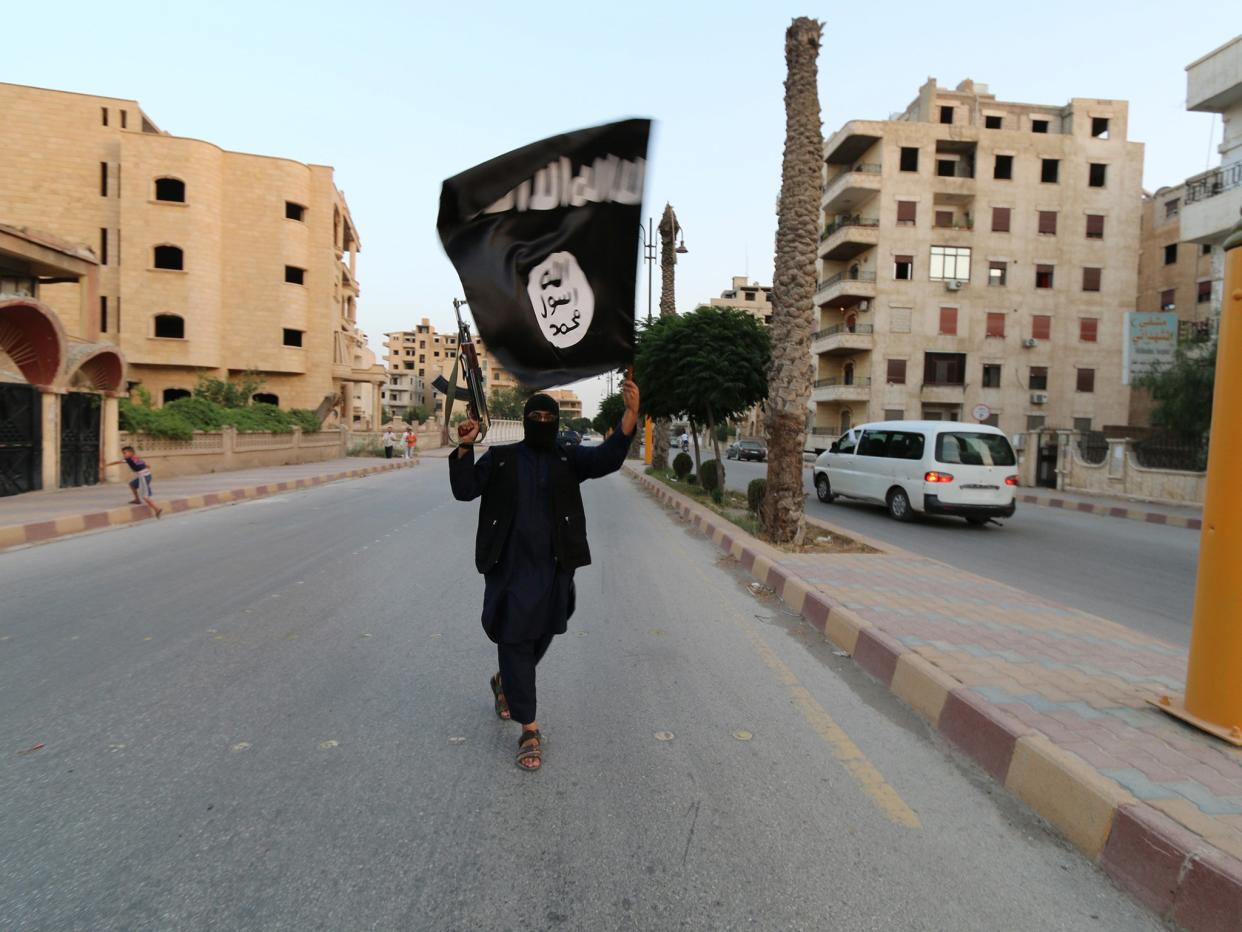As fighters flee Isis we should be worried about the group they’re about to join

Isis is in freefall. In recent weeks the terrorists’ final few hiding holes in Mosul’s Old City have at last been liberated and there are widespread, though unconfirmed, rumours that its leader al-Baghdadi is dead.
Focus is therefore increasingly on Syria amidst mounting expectations Isis’s forced control over Raqqa, its de-facto capital, will be next to crumble. With its implosion seeming increasingly imminent, any pretension of ‘statehood’ is now over.
This brings belated hope that civilians can at last attempt to rebuild their lives. Yet these hopes must be tempered by pragmatism. Significant military defeats sadly do not spell the termination of the terrorists’ poisonous ideology nor those deluded fighters who linger on. Just as Isis increasingly resembles a sinking ship, its militants, like rats, are deserting it.
The question is therefore what will become of those deserters. Many expect that in desperation Isis will revert to its status as an insurgency, as its predecessor al-Qaeda did in Iraq after its own rout by Anbar’s Sunni militias in 2007. A separate question is what this “pseudo mob” will look like.
It is likely that some Isis militants will seek rapprochement with the al-Qaeda-linked Syrian franchise – Hayy’at Tahrir al-Sham (HTS). Regardless of whether this will further harden the latter’s enmity to the Syrian opposition, the threat posed by HTS and its terrorist agenda should not be understated.
HTS has no desire to unite Syria – and Syrians know this. Antithetical to the democratic aims of Syria’s Arab Spring, HTS’s vision is one of sectarian violence and jihadism – deploying suicide bombers and violently imposing its corrupt agenda on the local Sunni population against its will in the same way Isis was infamous for.
The notion of HTS absorbing some remnants of Isis has been dismissed by some on the grounds that the history between them is too acrimonious. At a strategic level this may be true, although in reality the affiliations between al-Qaeda, Isis and HTS run deep. HTS and Isis are the most ideologically compatible of the rebel groups, practicing the same Salafist-jihadist ideology and sharing the same goal of establishing a jihadi state. It is no coincidence that HTS’s founder, al-Jolani models himself on Osama Bin Laden – one of the very few al-Qaeda figures respected by both HTS and Isis. He is also backed by the very ideologues pursuing unification of Syria’s jihadist factions.
HTS may already be soaking up Isis deserters. There is evidence that militants are defecting to HTS in significant numbers, and just this month there were reports HTS facilitated a panicked exodus of 100 Isis militants and their families into Idlib.
This should raise alarms on multiple grounds. First, militants fleeing Isis to HTS will bolster the latter’s somewhat fragile ranks. Second, Isis militants are trained in barbaric warfare: whether they belong to ‘Isis’ or ‘HTS’ their regressive agenda and destructive impact will be the same. Third, and perhaps most menacingly, HTS is opportunistically positioning itself as the solution to the humanitarian crisis facing Syrian civilians. To gloss over the common ideological lineage that HTS shares with Isis and al-Qaeda risks allowing them to hijack the Syrian people’s genuine plight to further their own perverted jihadist goals.
However HTS lacks authentic widespread popularity – an alien to the local population, a number of towns taken over by them have voiced their rejection through empassioned anti-HTS protests.
In Saraqeb city east of Idlib, and after suffering a period of violence and bloodshed at the hands of HTS, local civilians successfully forced HTS militants out of their city – just one example of communities taking a stand against HTS’s attempts to repress. Many Syrian rebels are also turning against HTS and gravitating towards the array of other rebel groups present on the ground.
Divisions and in-fighting within HTS, and between HTS and other rebel groups are rife, intensifying insecurity in the region – including open warfare, bombings and assassinations.
This complex picture points to a clear message: while the collapse of Isis in Western Iraq and the erosion of its base in eastern Iraq brings optimism, it does not in itself bring an end to the militants or the agenda they espouse.
The hope is that the cities wrecked by Isis can be restored, people can rebuild their lives and for the sake of the global community, that these terrorist ideologies are weakened. Yet as long as a power vacuum exists it risks creating the conditions for these groups to flourish, whether this manifests as Isis, al-Qaeda, HTS or an amalgamation of all three.
Ultimately, it will be a reassertion of the legitimate aspirations of the Syrian people that will defeat those extremist movements – a natural desire to live in a democratic and free country, in which their lives are respected and their children have a genuine future.
While many may not have heard of HTS, to paint them as a moderate group would be a fool’s error. We must all recognise the parasitic threat carried by terrorists as they scurry from one faction to another, plaguing local populations wherever they go. After all, this has ramifications for anyone who cares about what is happening in Syria, not only for the sake of the millions of innocent civilians affected but because the jihadis' foul stench can so easily spread across oceans, impacting on our stability and security.
Ahmet Altindal is Middle East and North Africa Analyst at Integrity UK

 Yahoo News
Yahoo News 
